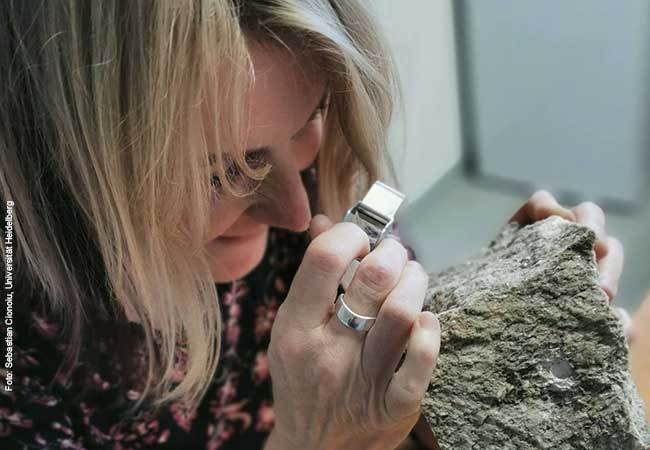Goethe University sheds light on the dynamics of plate movements in the Earth's interior by modeling Alpine rock

Understanding how plates move within the Earth's mantle and how mountains are formed is a complex task. However, researchers have found a way to obtain crucial answers through the analysis of certain rocks that have sunk deep into the Earth's interior and then returned. The Geosciences Department at Goethe University Frankfurt led a study that comprehensively analyzed whiteschist from the Alps using supercomputer modeling, which has led to questioning a previous theory about plate movement.
Geoscientists can reconstruct the movement of rocks in mountain belts by studying their journey from the depths of the Earth to the surface. This history of burial and exhumation reveals the mechanisms of plate tectonics and mountain building. Certain rocks that sink far down into the Earth's interior together with plates undergo Ultra-High Pressure (UHP) metamorphosis, where silica in the rock becomes coesite, making it denser. As the plates move upwards again from the depths, these UHP rocks come to the surface and can be found in certain places in the mountains. The rocks' mineral composition provides information about the pressures they underwent during their vertical journey through Earth's interior.
A new study by researchers at Goethe University Frankfurt, the University of Heidelberg, and the University of Rennes in France, challenges the previous assumption of a long, continuous ascent of rocks from a depth of 120 kilometers to the surface. The study analyzed whiteschist from the Dora Maira Massif in the Western Alps, Italy, and highlights rapid decompression, raising concerns that the long continuous ascent presumed by previous research may not occur.
The most significant discovery from the study is the spoke-shaped cracks that extend from the SiO2 inclusions found in all directions. The cracks result from the phase transition from coesite to quartz, causing a substantial change in volume and geological stresses in the rock. These stresses fracture the garnet around the SiO2 inclusions. According to Thibault Duretz, Head of the Geodynamic Modeling Working Group at the Department of Geosciences and one of the study's authors, "At such temperatures, garnet only stays very strong if the pressure drops very quickly." On a geological scale, this quick drop in pressure lasts from thousands to hundreds of thousands of years. Therefore, the pressure must have dropped from 4.3 to 1.1 gigapascals in this short period. Duretz and the other researchers' findings indicate that the whiteschist under examination lay at a depth of only 60 to 80 kilometers.
In conclusion, this new study challenges previous findings and shows that rapid tectonic processes can lead to minimal vertical plate displacements. The findings suggest that rock units do not move continuously upward over a great distance from the deep depths of 120 kilometers to the surface. Instead, they presumably jerk upward, leading to a decrease in pressure that causes UHP rocks to come to the surface. Studying the movements of these specific rocks can provide vital information about the Earth's interior.

 How to resolve AdBlock issue?
How to resolve AdBlock issue?